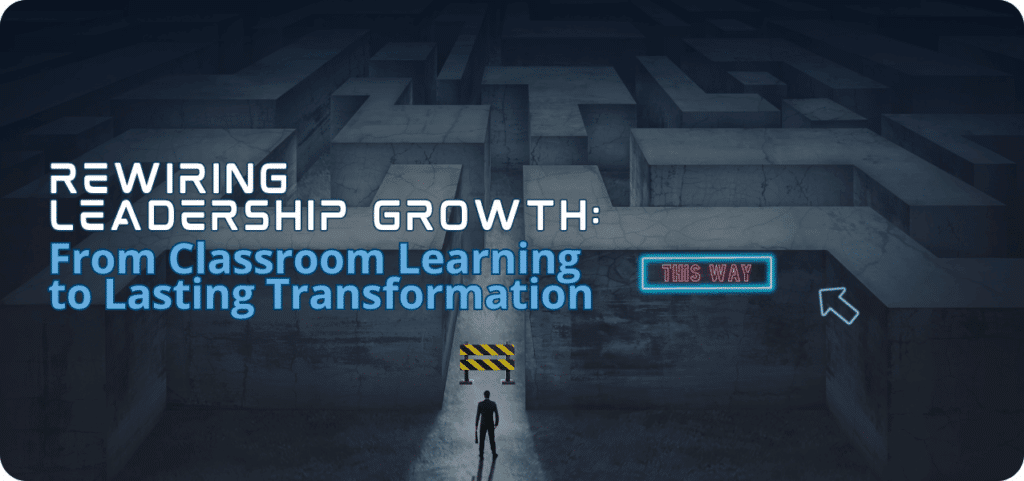How to Make Better Decisions Under Pressure: 5 Key Strategies for Navigating Complexity

Imagine yourself in the command center of a high-risk space mission. Alarms are blaring, data streams are pouring in from multiple sources, and a critical decision must be made within seconds. Make the wrong choice, and you could lose lives, endanger years of planning and waste billions of dollars.
High-stakes situations like these aren’t limited to the space industry– they also mirror the pressures that many of today’s business leaders face.
Executives and decision-makers now operate in an increasingly complex world, where variables, competing priorities and uncertainties constantly intertwine. Leaders must anticipate future challenges and make strategic decisions while juggling unexpected crises. While many leaders rely on gut instinct, cognitive biases, overconfidence and reliance on intuition can lead to costly mistakes.
One stark example of cognitive bias resulted in the explosion of the Challenger, a space shuttle that was launched in 1986. Despite engineers warning that the low temperatures could cause the O-rings to fail, the decision to launch was made under pressure, influenced by confirmation bias. Confirmation bias is the tendency to seek out, interpret and recall information in a way that confirms preexisting beliefs while disregarding contradictory evidence. In this case, NASA officials– eager to proceed with the launch– gave more weight to data supporting their decision, ignoring critical warnings from engineers with serious concerns. This failure to adequately consider all evidence cost the lives of seven astronauts and set back space exploration for years. Such errors highlight the importance of leaders pausing to reflect and critically evaluate all available information, rather than making decisions based on initial impulses or selective reasoning.
So, how can today’s leaders refine their decision-making to mitigate risks?
The answer lies in cognitive reflection.
Our brains and complexity…
When confronted with complex situations, our brains process information through two main neural networks: the automatic mode (System 1) and the analytical mode (System 2). System 1 is fast, intuitive and relies on mental shortcuts, allowing us to react quickly. While quick thinking can be helpful in some cases, it often leads to impulsive decisions, particularly in moments where emotions override logic. In contrast, System 2 is slower, more deliberate and requires more cognitive effort. A slower process leads to more thoughtful analysis and better decision-making– helpful when the stakes are high.
When we’re placed in uncertain environments or faced with large amounts of information, our brains can enter a state of cognitive overload. In this state, System 1 often takes over, prompting us to make quick decisions based on intuition, even when deeper reflection is needed. To mitigate this effect and make more informed decisions, it’s essential to have a solid understanding of the two mental systems at play. This way, we can manage our time effectively.
One way to better manage complexity and avoid impulsive errors is to gain a solid familiarity with the organizational and decision-making systems you operate in. As former astronaut Mike Bloomfield points out:
“When operating in complex environments, two specific techniques helped reduce uncertainty and ensure success. First, systems familiarity– especially system interdependencies– was critical. We utilized whole-team simulations, classroom lectures and single-component training to increase system familiarity. The difference between complexity and simplicity is often a function of familiarity. Second, a solid understanding of reversible and irreversible decisions enhanced time management. Reversible decisions (visualized as a two-way door) require less accuracy than irreversible decisions (visualized as a one-way door). Knowing the door type (a result of system familiarity) allowed us to optimize our decision-making time by spending more time and diligence on the one-way doors.”
This approach demonstrates that, to navigate complex environments effectively, understanding systems (and their interconnections) is key. Familiarity with systems enables leaders to better manage their time and energy, focusing their efforts on irreversible decisions which require more reflection and diligence.
Understanding complex systems is only one part of the equation. The other essential way we avoid hasty decisions is by cultivating cognitive reflection.
What is cognitive reflection?
Cognitive reflection (CR) is the ability to pause, question initial impressions and engage in deeper analysis before making a decision. This skill, when practiced and refined, can make the difference between a costly mistake driven by intuition and a well-considered, informed decision. Introduced by psychologist Shane Frederick in 2005, CR aligns with Daniel Kahneman’s System 2, which involves slower, more deliberate decision-making. While intuition can be helpful, relying solely on gut instinct can lead to cognitive traps such as confirmation bias (where one seeks information that confirms preexisting beliefs) and overconfidence (where one assumes their judgment is infallible). When leaders actively cultivate cognitive reflection, they are better equipped to recognize these biases and make better, more balanced decisions.
How does cognitive reflection help make better decisions?
When comparing impulsive and reflective decision-making, the difference in outcomes is often striking. Consider the case of smartphone manufacturers rushing to innovate. In the tech industry– a highly competitive environment– companies often face pressure to release new device models quickly. Due to this insistent demand for new phones, some organizations in the past have prioritized speed over thorough testing. As a result, devices have often been launched with unexpected hardware or software issues, leading to performance problems, overheating and battery failures. These issues then snowballed into costly factory recalls or software patches to fix problems that could have been identified with a more reflective, rigorous approach. If the leaders of these tech companies had practiced cognitive reflection, they likely would have challenged their assumptions and made their decisions with a broader perspective, leading to more informed and sustainable choices for their organizations.
Three key benefits of cognitive reflection
1. Improved decision-making:
Leaders who practice CR make more informed decisions, reducing the risk of impulsive errors. By thinking beyond their first impulse, individuals can consider a wider range of factors and alternatives before taking action.
2. Reduction of cognitive biases:
Cognitive reflection helps leaders recognize and mitigate the biases that often lead to poor decision-making. By questioning their assumptions, they avoid mental shortcuts that could lead them astray.
3. Strengthened critical thinking:
CR fosters stronger analytical thinking, enabling leaders to critically evaluate complex situations. It also encourages constructive skepticism, helping individuals to identify gaps in information or reasoning before making final decisions.
Five strategies to strengthen cognitive reflection
Cognitive reflection isn’t a trait people are inherently good or bad at– it is a skill that can be honed with practice, with practical applications in both personal and professional environments. Leaders who want to enhance their cognitive reflection can integrate the following strategies into their decision-making process:
1. Take time to analyze before acting
In high-pressure situations– where emotions are high, and you can feel your heart racing– the instinct to act quickly is often overwhelming. However, taking even a brief pause to breathe and refocus can improve the outcome. During unexpected system failures, Mike Bloomfield explained that his training emphasized pausing to assess the situation, rather than rushing into a solution. A moment of reflection, though brief, can calm the nervous system, opening pathways to more measured decisions.
By taking a deep breath, stepping back and consulting a checklist before making major decisions, leaders can incorporate the principle of “pause and reflect” into their day-to-day leadership practices. With a system in place, you’ll be ready to access your cognitive reflection skills when the pressure is on.
2. Question first impressions
While intuition is valuable, it should not be blindly trusted. Studies show that individuals who resist their initial intuitive reactions are more likely to make correct decisions. Leaders can apply this principle by asking themselves, “Am I making this decision based solely on instinct? What evidence do I have that supports my conclusion?”
For instance, a CEO considering a merger might feel overconfident due to past successes. However, if this CEO took the time to challenge their assumptions using concrete evidence (ex: reviewing financial data, seeking expert opinions or running simulations), the data could expose hidden risks, leading to more thoughtful decision-making.
3. Seek diverse perspectives
No leader operates in isolation, and the best decisions are often made when multiple viewpoints are considered. Jeff Bezos, founder of Amazon, popularized the idea of “disagree and commit,” where team members are encouraged to voice disagreements before a final decision is made. Leaders who actively seek diverse input– whether from team members, external advisors or by playing devil’s advocate themselves– are less likely to fall prey to groupthink or narrow perspectives.
4. Train the brain with mental exercises
Just as physical exercise strengthens muscles, mental exercises can enhance cognitive reflection too. Leaders can bolster their decision-making process by engaging in activities such as:
- Mindfulness meditation: Studies have shown that mindfulness can improve focus, reduce impulsive reactions and enhance overall cognitive function.
- Strategy games and puzzles: Activities like chess, Sudoku or strategy-based video games promote critical thinking and problem-solving skills.
- Debates and case studies: Analyzing past business failures or engaging in structured debates can push leaders to examine their thinking from different angles.
5. Learn to manage stress
Stress impairs cognitive function, making it harder to think clearly and make rational decisions. Stress-management techniques– such as the 4-7-8 breathing method (inhale for 4 seconds, hold for 7, exhale for 8), physical exercise and journaling– help clear the mind, restore focus and facilitate better decision-making under pressure.
Final Thoughts
In a world where high-stakes decisions happen in seconds, cognitive reflection isn’t just a skill– it’s a competitive edge. The best leaders aren’t the ones who act the fastest; they’re the ones who know when to pause, question and think critically. They resist impulsive reactions, challenge their own assumptions and embrace complexity with clarity. The future of leadership belongs to those who can navigate uncertainty with a sharp mind and a steady hand. By training themselves to reflect before they react, leaders can turn challenges into opportunities, making smarter, stronger decisions for their teams, their organizations and themselves.
Want to test your cognitive reflection? Try answering these three questions from the Cognitive Reflection Test!
1. A bat and a ball cost $1.10 in total. The bat costs $1.00 more than the ball. How much does the ball cost?
2. If it takes 5 machines 5 minutes to make 5 widgets, how long would it take 100 machines to make 100 widgets?
3. In a lake, there is a patch of lily pads. Every day, the patch doubles in size. If it takes 48 days for the patch to cover the entire lake, how long would it take for the patch to cover half of the lake?
Author
Subscribe to get Access to Exclusive Content





